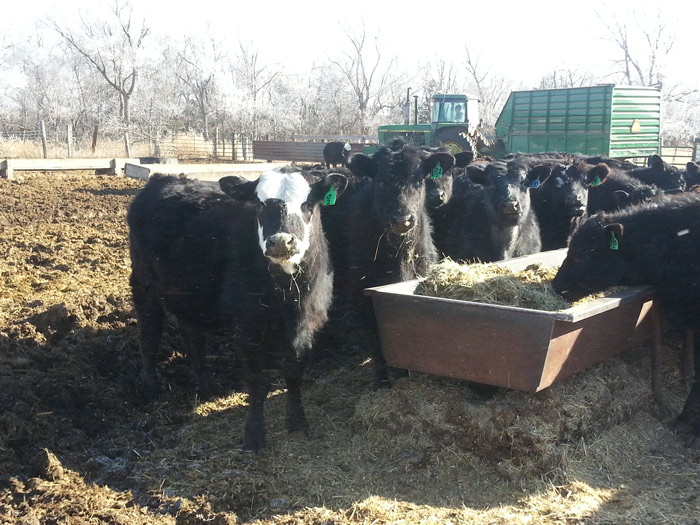News
Use Livestock to Improve Soil Health
Courtesy SDSU Extension
Cover crops and livestock are beneficial to the soil, and Pharmco can help you with both! We carry a variety of premixed cover crop options, and we can mix a custom blend for your operation’s needs. Give Myron a call today at 605-628-9175 for more details, or stop in to visit with your local Pharmco team!
In the northern Great Plains, converting grasslands to croplands can potentially reduce soil health. Tong Wang, SDSU Extension’s advanced production specialist, said introducing livestock into arable cropping systems can reverse the negative impacts by improving soil health as well as adding profit per acre.
“In the integrated crop livestock systems, cover crops and crop residue provide feed to livestock, while plants capture nutrients from the livestock waste,” Wang said.
Colin Tobin, graduate research assistant of the plant science department, added that potential economic benefits include reduced fertilizer cost for the cash crop, yield/profit increase from subsequent cash crop and additional cost savings from supplemental hay.
“To get maximum benefits, landowners should consider planting a variety of cover crop species such as legumes and non-legumes,” Tobin said.
Cover crops can also be used to achieve multiple environmental benefits. “For example, the cover crops planted after harvesting the main crop can reduce nitrogen loss by absorbing residual fertilizer nitrogen,” Tobin said. “Cover crops also provide vegetative cover during critical periods, which can significantly reduce the soil loss rate of croplands,” Tobin said.
Short-term impacts of grazing cover crops on soil health
When implementing an integrated system, Sandeep Kumar, Assistant Professor in the SDSU Plant Science department said landowners need to consider cover crops which protect the soil from adverse effects of hoof traffic—mainly compaction.
“Because hoof traffic can negatively impact the near-surface soil conditions, soil health and hydrological properties. The use of a diverse cover crop mixture such as radish, peas, oats, lentils, and sorghum-sudangrass can provide increased biomass on the soil surface that can alleviate the compaction impact under these integrated crop-livestock systems,” Kumar said.
Results from a South Dakota grazing study, funded through a Natural Resources Conservation Service – Conservation Innovation Grant showed that short-term grazing did not have a negative impact on soil properties. “This included soil water retention, bulk density, soil organic carbon and total nitrogen contents,” Kumar said of the study which collected soil samples following an autumn grazing cycle of six heifers per 3.5 acres.
Planting recommendations for cover crops
To ensure that cover crops have sufficient time and moisture to establish, Kumar recommends planting cover crops after small grain harvest during a three-year rotation in a corn-soybean-oat or wheat rotation.
Moving forward, Wang said SDSU Extension and South Dakota State University faculty will continue to conduct research focused on ways to improve economic and environmental sustainability of agricultural systems through integrating crop and livestock enterprises.
“Our recently funded projects through the Natural Resources Conservation Service and USDA-Coordinated Agricultural Projects (CAP) will help in providing short-term and long-term impacts of cover crops, grazing and grazing cover crops on soil health and crop productivity,” Kumar said. “The USDA- Coordinated Agricultural Projects is a multi-institutional funded project that will focus on promoting the integrated crop-livestock systems in the North Central Region for improving food security.”


